Media Essays: A Vampiric Comparison Part 1
- mediarocks94
- Jul 26, 2023
- 12 min read
Updated: Aug 4, 2023

Written by Captain Conroy
Author’s Note: Some readers may find the images in this post disturbing. Viewer discretion is advised.
Hi everyone, it’s me Captain Conroy once again. The last time I contributed to the Media Man’s blog was when I made an essay about my fondness for Thomas and growing up with the franchise. This time around I’m going to talk about another one of my very favourite characters – the vampiric monster that is Count Dracula.
However, Dracula is a very widely adapted novel so as you can imagine there is lots to talk about. But for this post, I would like to talk about and compare the four Draculas I happen to be most familiar with. Some of which I even watched their films to prepare for this. I’m going to rate each one in terms of performance, presentation and lasting first impressions. I’ll even be sure to give out some fun facts here and there, so let’s get started!
Candidate 1:

Name: Bela Lugosi
Nationality: Hungarian/American
Height: 6’1
First Played Dracula: Dracula (1931)
Birthdate/Deathdate: 20th October 1882 – 16 August 1956 – Aged 73 Years
So naturally to kick-start things we’ll start with not only one of the most famous examples of Count Dracula on the big screen, but also the one who began the Transylvanian accent: Mr. Bela Ferenc Dezso Blasko, who later became immortalised under the name of Bela Lugosi. This particular Dracula was quite the trend setter to inspire many things about vampires for years to come.
Having seen the 1931 production for myself, I have to say as a movie it is very basically presented – however I do have to be lenient as of course at the time, this movie along with the movie business as a whole was brand new and they would have only just been testing the boundaries. The story involves Dracula seeking to move to England and he is buying a house near London by name of Carfax Abbey so coming from England is Mr. Renfield to meet him and sort out the documents needed for the Count to gain ownership of the place.

And naturally once everything is in order – the Count is able to go to England and feed off of whoever he pleases and he ends up taking Renfield with him as his servant. So it’s down to Jonathan Harker and Professor Van Helsing to put a stop to his evil ways once and for all. As I say it’s as basic as the story comes and it’s even presented as such but of course I can make some allowances as it was made very differently back then to how movies are made today. However how does Lugosi do as Dracula you may ask. Did he really set all the setting stones for the vampire genre to come?

Well yes – yes he did, plain and simple. Lugosi was a proper suave and smooth gentleman with a lot of charisma on his side. I suppose it helps by the fact he had played Dracula prior to this movie by playing the character on Broadway in 1927 – that play much like the movie was a hit. One of my favourite things about Lugosi’s performance is how slowly he moves when he’s walking across a room or when he was talking to Renfield – it adds an air of intimidation to his performance as Dracula. You just never know when he might do something or what will come later. This really shows in a scene when he’s moving slowly and smoothly while going around the room but when Van Helsing shows him a mini mirror within a cigarette box, he very quickly moves and knocks the box out of Van Helsing’s hands and on the floor.

As well as Harker and Dr. Seward in this scene – I bet nobody in the cinema watching it for the first time saw it coming. But Lugosi helped to pull it off by acting perfectly gentlemanly one minute and the next very much lesser behaved. And as perfectly polite and pleasant he was to Renfield when he properly presented himself and not so much in disguise as we’ll cover a bit more on – you can still tell there’s an air of unease about Dracula in this version which of course the purpose of that is to have audiences on the edge of their seats. The slow way he moved, the way he was coming close to Renfield when he saw blood on his finger from a cut and no wonder the movie emphasises shots like these throughout it because there is something very chilling about that stare.

Who wants to bet that stuck in many people’s minds after watching that movie? That really is such a glare. Just imagine that staring at you if you woke up in the night for whatever reason. A lot of the chill for Lugosi’s performance also comes from the fact that when the intimidation factor is high – he very rarely speaks. My absolute favourite scene to showcase how intimidating Dracula can be is the scene where he kills Renfield for leading Van Helsing and Harker to him. He does at least say one thing to him as he was going to try and walk away but the rest of it shows him coming slowly towards him down the stairs with his hand out ready to get him. All the while Renfield begs of Dracula for mercy and not to kill him but his pleas fall on deaf ears as Dracula will not tolerate his failure and then he proceeds to choke him to death. I at least presume this is the case as the rest happened off screen and last we see of Renfield he’s tumbling down the stairs.

Even if this didn’t have me biting my nails or whatever else, this scene from an audience perspective is genuinely terrifying as here he is not saying a word, closing in very slowly and no matter what Renfield says, we all know Dracula is going to kill him. And just imagine how Renfield must be feeling in this scene, well – I don’t think we would want to really, do you? However after this scene sadly the rest of it gets very underwhelming as he carries Mina off, he is found in his coffin and while Jonathan goes looking for Mina, you see Van Helsing preparing to deliver the killing blows, but when he actually drives a stake through Dracula’s heart, it’s done off-screen and that’s just the end of Dracula’s reign then and there – which isn’t all that great compared to later versions of Dracula.
I certainly do give them points on presentation for this Dracula on the other hand as the overall presentation it cannot be faulted. Even if the bats aren’t real bats – of course they kept how Dracula is a master of disguise being able to take on the form of bats or wolves and later depictions will follow this too. And in his case – unbeknownst to Renfield – he first laid eyes on Dracula when he was in disguise as his coach driver.

Like so – and when Renfield gets to properly meet him in the castle – here is where the presentation really shines and would very much have set a lot of stereotypes.

No doubt you would have all seen this image at least once in your life – I know I myself have seen it too many times to count. But still, he wears what is basically in this day and age a white tie dress code with his tailcoat, trousers and shoes being black, his shirt, waistcoat and bow tie being white and of course we have the addition of the cape. This one is black with a flipped up collar and contrary to common colourisations of the film and pictures it actually had a taupe coloured lining.

As demonstrated here. And although not present in these two images he sometimes sports what looks like a monocle on a string around his neck and a medallion with a red ribbon and in at least two scenes in the movie he had a top hat making him look like two things. Either Jack the Ripper or that he’s dressed to go to the opera. I do love this look myself it is very classy and at the time of writing I at least have a replica cape and medallion but I plan to cosplay the whole look in the future.
By itself the cape was more than a costume piece – it was a personal possession of Lugosi’s and he clearly did treasure it. Lugosi reprised his role a few times more after the 1931 movie and he would have had slightly different ones like how in Abbott and Costello meet Frankenstein, he had one made out of a shinier material and had the inclusion of slits for the arms to go through, but the one from the 1931 movie was a personal possession of his that he wore on stage and film and there’s a pretty sweet story that goes along with this.
Well, it’s of course sad that he passed away in 1956 – but Lugosi was actually buried in a copy Dracula cape. Why a copy? Because he wanted his son to have the original which is pretty sweet as he clearly loved the cape and he clearly loved his son so who was better qualified to have it?

But as of the time of writing – I’ve heard that his son has now donated it to a museum where it will be well looked after and is even undergoing some restorations and then everyone else can enjoy the sight of it rather than leaving it lying around in a box or something which his son believes that it would much please his father at the prospect of other enjoying it – which is very thoughtful of him and I’m sure his father would not at all fault him for it.

And as far as lasting impressions go – of course Lugosi left a lot behind him from the moment filming wrapped and the movie saw release in cinemas. He started a lot of setting stones for future vampire movies and the genre as a whole, he became such a horror icon to the point of typecasting, he defined Count Dracula for many and even in this day and age in what is nothing short of a new coming generation he is still very much the definitive Count Dracula to many. The movie of course is very different to what we’re used to in this day and age but the way I see, we must take opportunities to go back in time to movies like this, we must take the time to watch and even if we don’t feel the same way audiences would have done years ago, we must take the time and opportunities to appreciate what these films have done and appreciate how different things were back then but also showcasing where things begin and how things develop and Lugosi’s Dracula is certainly no acceptation to this. He has made a long lasting impression and he is still very sorely missed to this day.
Candidate 2:

Name: Christopher Lee
Nationality: British
Height: 6’5
First Played Dracula: The Horror Of Dracula (1958)
Birthdate/Deathdate: 27th May 1922 – 7th June 2015 – Aged 93 Years
And now we’re moving on up to probably the most famous Dracula alongside Bela Lugosi – the late great Sir Christopher Lee. Christopher Lee has certainly had a good run as Dracula doing it for 7 movies for Hammer Horror starting with The Horror Of Dracula in 1958 until The Satanic Rites Of Dracula in 1973 and he even did one in 1970 which was not a Hammer Horror production. And naturally this Dracula is more than worthy of carrying his legacy on from one generation of horror fans to the next as we shall now go into detail about.
Horror of Dracula was the first in a series of nine films produced by Hammer Horror – which started with Horror of Dracula in 1958 and ended with The Legend of the 7 Golden Vampires in 1974. And to kick-start this one, the story plays out quite differently. We have Jonathan Harker coming to see the Count – but while he seemingly is coming to work as his new librarian rather than selling him a house, instead he is actually a vampire hunter coming to destroy Dracula to no avail he gets bitten by an unnamed vampire (presumably a bride of Dracula’s) which weakens him already and he ends up becoming a vampire himself. Now it’s up to Van Helsing joined by Arthur Holmwood to stop Dracula.

So in terms of performance, needless to say what least is to be expected? It’s Christopher Lee – if anyone had a different introduction to Christopher Lee prior to finding out about this movie (my intro to him was Star Wars probably) we all knew he was going to nail it as such a classic literary character. And nail it he certainly did. Everything about him made him the perfect Dracula from his towering height, his rich voice, his cold stares and in general Christopher sure had a commanding presence about him. Even when we first see him, he is cast mostly in shadow at the top of the stairs and then comes more into light as he comes down the stairs to meet Jonathan.

I wonder if that was meant to be a visual indicator for what little we’d see of Dracula’s dual-personality in this movie where he looks like a sinister cloaked figure in the shadows, then he pretends to be a warm accommodating mild-mannered host and then we see the bloodthirsty monster that lies underneath.

And further more to this – Lee was certainly someone who always made the best of his source material as his Dracula does not speak much but yet he sells so much to us through facial expressions and his body language. Some of which even clearly homage Lugosi like this screenshot right here.

And with Lee’s Dracula one of my favourite things has to be you just never know where he’s going to turn up next and how he even gets there. Like how did he get at the top of the stairs when he met Jonathan, was there any other entrances? Least of all he certainly turned up when Jonathan least expected as he seemed genuinely surprised to see him. And a particularly favourite scene of mine is when Jonathan is going to stake him, but he is too late. The way it’s played out – Jonathan wouldn’t have even heard him get up from his bed so points there for stealth master. And when Jonathan realises he is too late and the Count closes in on him, I just love how terrified he looks.

That is a genuine look of fear in his face right there as he knows he’s about to meet his end as a human and is doomed to become a vampire. And through all of this, he is clearly a master of manipulation as he is able to control people and is constantly one step ahead of the opposition. At least until the end of the movie when Van Helsing discovered his coffin in the basement of the Holmwood abode and Dracula has to retreat with Mina to his home but Van Helsing and Holmwood give chase and Van Helsing corners him. Even then he doesn’t go down without a fight. It was just unfortunate for him that Van Helsing could see sunlight coming through the curtains so he pulled them down and Dracula got caught in the sunlight and Van Helsing makes a crucifix shape to keep him at bay.

And now that brings us a little to presentation. Because this is where Lee’s Dracula could be compared to the Master from Doctor Who - because what you have just heard about here was nothing short of a heroic defeat on Van Helsing’s part. But Lee’s Dracula just would not die as he came back.

And is if that wasn’t enough, he came back again.

And again.

And again.

Oh he came back two more times after this one until The Legend of the 7 Golden Vampires where he was played by John Forbes-Robertson instead.
Like so. Just won’t die will he? But more with the presentation this Dracula without a doubt certainly looks very classy and his look is one of my favourite Dracula looks ever.

Here we have a black three piece suit which was something the average wealthy gentleman from the days of old could have been seen wearing. The jacket looks longer than a usual jacket in this day and age. When we first see him the only specks of colour were his white shirt and I noticed on a re-watch he had red cufflinks which to me looks like a fitting way to symbolise the blood the vampire lusts for. The cape Lee was given to wear was nice enough by itself but it looked even better once it was given red lining from his second film going forward.

Just how much better does that look eh? But all in all regardless of what lining colour Lee was given one majestic cape to wear and it was clear that someone with a butt load of cash thought so too as the plain black cape sold at an auction for a grand-spanking total of £26’400 – which if anyone across the pond is reading is equivalent to around $33’547.64.

And no wonder it sold for that much as it was worn by the man himself. And on the subject of the man himself – he most definitely left a lasting impression on viewers all around the globe. When re-watching the Horror Of Dracula, I was actually surprised as to how little he was actually in it, but yet he just wowed us all with a performance that took the horror genre by storm. I even remember thinking how it occurred to me how long it was from one scene of his before we saw him again.
And remember what I said about his Dracula not speaking much? Well, as far as lasting impressions go – Lee also strikes me as someone who genuinely cared about the original source material he apparently was never really all satisfied with his scripts – even clashing with Hammer suggesting that they should use Stoker’s words. And this clearly showed because he didn’t say a word in his second film as he described the lines as being unsayable so he outright refused to speak because he was convinced if he said the lines they would have gotten a terrific laugh. Don’t believe? You can hear it from the man himself right here:

Be it different to the source material or not, Christopher Lee’s Dracula is still a favourite of mine and I may well check out his other movies at some point in the near future. His Dracula is dark, menacing, bloodthirsty and everything a good Dracula should be. No-one else could have done it like he did. His Dracula reminds us all of what a star Christopher Lee was and that gone he may be but certainly never forgotten. Least of all, does anyone remember when he got knighted on the eve of Halloween? Yep – I bet his Dracula had something to do with that, I bet because of that alone whoever schedules knighting’s did that on freaking purpose.
Continued in Part 2...


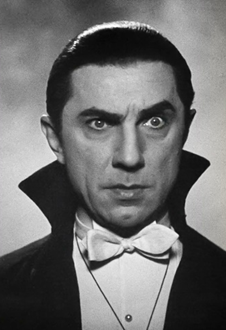

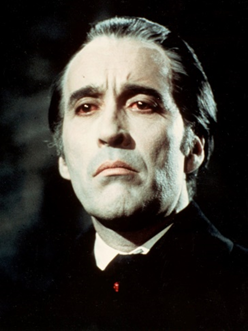

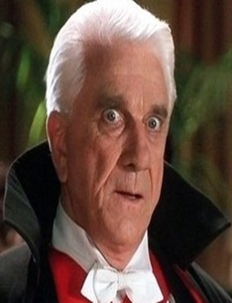

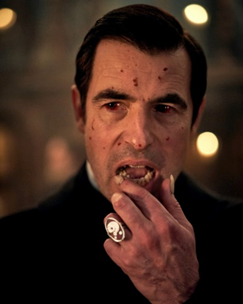

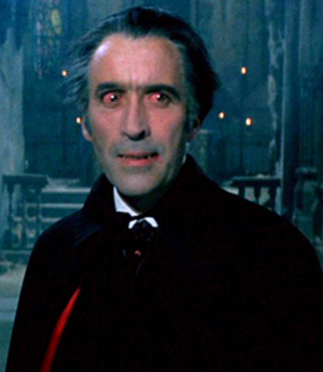

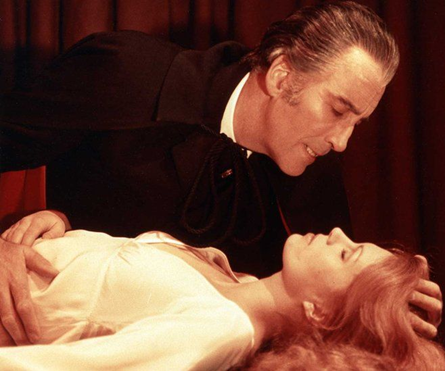



Lugosi really immortalized Dracula in the media, especially the image, and the voice, and the 1931 film totally had a dreamlike atmosphere.
Lee was on a whole other level with how creepy he is. I think he's the first modern Dracula for sure.
You did a good job on writing this one, Conroy. ^^
Yo, Wandering Fox here. I’m quite impressed with this history lesson you gave us, I didn’t know anything of Dracula’s original actor, thank you for telling us. Judging by the upcoming couple of Draculas I don’t know if they’ll leave a good enough impression.